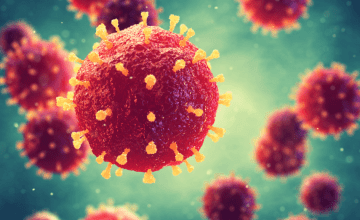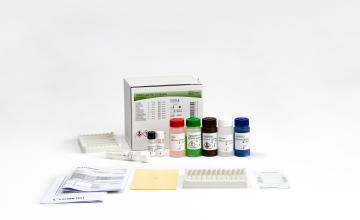The clearest answer in HIV confirmation testing
When you are confronted with repeatedly reactive HIV screening patient test results it is strongly recommended1,2,3,4 that you confirm these results with other reliable techniques, such as the INNO-LIA™ HIV I/II Score immunoblot assay.
The INNO-LIA HIV I/II Score test contains recombinant proteins and synthetic peptides from HIV-1 and HIV-2 as well as a synthetic peptide from HIV-1 group O.
These carefully selected antigens are coated at optimal concentrations as discrete lines on a nylon strip with plastic backing.
This immunoblot test detects seroconversion earlier than other confirmation technologies and gives less indeterminate results5-6.
This reduces the need for repeated testing and thus limiting extra costs.
Compared to other testing technologies the INNO-LIA HIV I/II Score assay provides clear differentiation of HIV-1 and HIV-2 infections6-7-8 - which allows for much more adequate patient treatment.
So, here are some of the key advantages of using our gold standard immunoblot assay for HIV confirmation testing:
- It’s the latest generation of a reference test with more than 25 years of accumulated and widely documented HIV testing results across the world.
- It reliably confirms and differentiates HIV-1, HIV-1 group O, and HIV-2.
- It gives a low number of indeterminate results.
- It comes with ready-to-use and color coded reagents.
- It offers clear cut, standardized and objective reading and interpretation of results.
- It features flexible strip processing with both short and overnight procedures plus efficient walk-away automation; read the results when you are ready.
Download our leaflet for full background information about the characteristics and references of the INNO-LIA Score product range.
References:
- CDC Updated Recommendations for Laboratory Testing for the Diagnosis of HIV infection (published June 27, 2014)
- Public Health England – UK Standards for Microbiology Investigations / HIV screening and confirmation (Issue date 03.01.17)
- WHO guidelines – Screening donated blood for Transfusion-Transmissible Infections & Consolidated guidelines on HIV testing Services (July 2015)
- European guidelines: Guide to the preparation, use and quality assurance of blood components. Recommendation No.R(95) 15
- Comparison studies performed at Fujirebio Europe N.V. using BBI seroconversion and low-titer panels.
- WHO report 16 “HIV ASSAYS: OPERATIONAL CHARACTERISTICS” – 2009
- Test performance data – IFU INNO-LIA™ HIV I/II Score assay
- Hønge BL et al. HIV Medicine (2018). The challenge of discriminating between HIV-1, HIV-2 and HIV-1/2 dual infections.



